Desde o seu lançamento em 2016, Terraforming Mars conquistou um grande número de seguidores e foi apelidado de um dos melhores jogos de tabuleiro do mercado neste momento. É o jogo perfeito para qualquer jogador que goste de jogos de tabuleiro baseados em ciência.
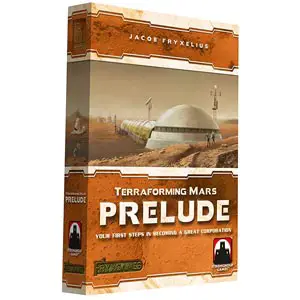
O Terraforming Mars tem 5 pacotes de expansões cheios de ação (e há rumores de que virão mais a caminho) e, embora todos eles tenham sido concebidos para acrescentar mais emoção e jogabilidade ao jogo básico, pode ser difícil escolher qual é o melhor para ti.
This review will guide you to which Terraforming Mars Expansions will fit your needs best and offer you the most fun in the long run.
| Imagem | Produto | |
|---|---|---|
Melhor Escolha 
| Terraforming Mars: Prelúdio
| Verificar preço |
Best Game Variety 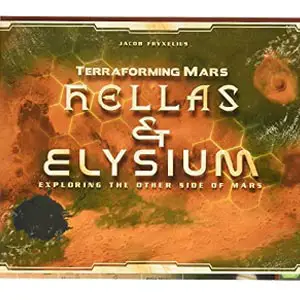
| Terraforming Mars: Hellas and Elysium
| Verificar preço |
Best Deal 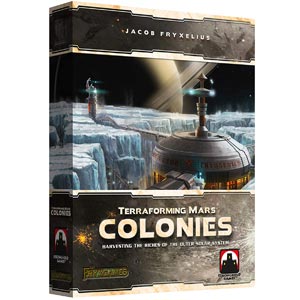
| Terraforming Mars: Colonies
| Verificar preço |
Longer gameplay 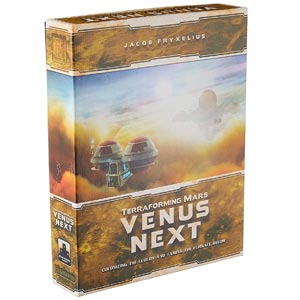
| Terraforming Mars: Venus Next
| Verificar preço |
Best for Experts 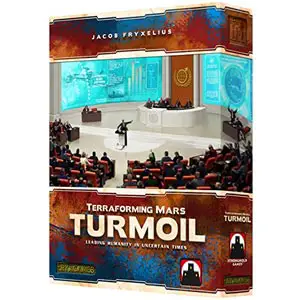
| Terraforming Mars: Turmoil
| Verificar preço |
A Quick Overview of Terraforming Mars
Terraformação de Marte is set in the 2400s and each player takes on the role of corporations sponsored by the World Government on Earth to make planet Mars more habitable. You will compete for victory points that are awared to the corporation that contributes the most to the Mars terraforming process.
At the beginning for the game, you will each be given Corporation Cards and Project Cards that contain corresponding resources, actions, or bonuses for you to complete achievements. These cards represent anything from introducing wildlife to a vacant space or building cities.
Many of the cards will help you further your progress in the game. However, you must be careful as some cards may also harm your progress.
Apart from cards, players can also use Standard Projects to earn points and complete actions during the game. Standard Actions can be anything from releasing an asteroid onto the surface of Mars to raise the temperature “1” space or building an Aquifer which allow a player to place one Ocean Tile on the board.
Player boards are used to keep track of each corporations production value of resources.
There are six resources, namely:
- Megacredits
- Steel
- Titanium
- Plants
- Energy
- Heat
There are also Milestones and Awards up for grabs for any player who completes their prerequisites. Milestones reward players with 5 points for 1st place and 2 points for 2nd place — the same goes for Awards.
Scores are tallied at the end of the game by adding up the following:
- Player TR (Base Score)
- Awards and Milestones
- Number of Greenery and City Tiles (1 Point Each)
- Number of Greener Tiles Adjacent to City Tiles (1 Point Each)
- Victory points from cards
The player with the highest score at this points wins. But, in the case of a tie, the player with the most Megacredits takes the crown.
Now that we’ve discussed the basic rules of playing Terraforming Mars, let’s jump right into the details of its 5 available expansions.
Terraforming Mars: Prelude — Best Terraforming Mars Expansion
The Terraforming Mars: Prelude Expansion pack changes the whole Terraforming Mars experience for the better!
When playing the base game by itself, it takes a while before you really get into the meat of the game. The Prelude Expansion pack kicks things into gear by changing the setup process a little bit.
Each prelude card that is dealt offers players a variety of starting resources and actions that, if played well, can lead their corporations into victory in the long run. This expansion pack also shortens the game duration by at least 30 minutes, which is a big plus for those who don’t like lengthy games as much.
We don’t recommend using this expansion pack, however, if it’s your first time playing Terraforming Mars, as the initial base game setup is already a bit complicated. But once you’re comfortable playing the base game, Prelude is the best expansion pack to add to your registry.
Components and Quality
The Prelude Expansion contains brand new cards that add to the game’s replayability value, including:
- 7 new project cards
- 1 solo goal reference card
- 35 prelude cards
- 5 new corporations
Each project and corporation card introduces “wild tags” which can do whatever you want them to do during your turn but don’t trigger any effects when put into action and don’t count towards any game scoring.
The cards are printed on thick, durable cardboard using high-quality indelible ink that can withstand multiple games without damage.
Mecânica e Regras
To incorporate the new project and corporation cards with the base game, simply shuffle the cards into the decks from the base game and play them as normal. Once all corporation cards are dealt and each player has chosen their project cards, deal 4 Prelude cards to each player.
During this step, players each choose which two of the four cards they received they want to put into play. After this is decided, they discard the remaining two prelude cards and put them in the discard pile.
As we mentioned above, there are project tags that feature a new type of tag called the “wild tag”. This tag won’t trigger any effects once it’s put into play or count for any scoring at the end of the game. But when you perform an action, the wild tag can be a tag of the player’s choice. This can include things like claiming milestones or claiming awards.
When playing solo, you now only have 12 generations to win. Additionally, there’s a new solo variant where instead of trying to fulfill all the global parameters (oxygen levels, ocean levels, and temperature), you’re trying to get to a terraform level of “63” before the game closes. There’s also a new Standard Project, which costs 16 megacredits to raise your TR (terraforming rating) by 1.
Aside from everything else mentioned above, all other rules from the base game still apply to Prelude.
Pros and cons
Reflexões finais
Terraforming Mars: Prelude makes the setup process a lot more fun and interactive, all while adding more opportunities for economic growth for each corporation (player). It shortens the game length by a significant 30 minutes and adds more options for gameplay through its new project and corporation cards.
If you’ve been playing Terraforming Mars for a while now and are ready to take your playing to the next level, Prelude is the best Terraforming Mars expansion pack for you.
Terraforming Mars: Hellas & Elysium — Best Board Game Extensions
Unlike the other expansion packs that include new cards, the Terraforming Mars: Hellas & Elysium Expansion pack is basically just a new double-sided game board. It features two new regions of Mars (Hellas and Elysium) for corporations to colonize and has an entirely different layout for designated ocean spaces.
Components and Quality
The Hellas & Elysium Expansion pack comes with a double-sided game board and a small rules sheet to introduce new mechanics and gameplay to the game. It features new placement bonuses, plus unique awards and milestones that increase the overall satisfaction value of the game.
One downside to this expansion pack, however, is that it doesn’t really come in a box — it’s sent to you in a packet or an envelope — which increases its chances of getting damaged during transport.
Another thing, there’s no reference card included for the Awards and Milestones, which would have made it easier to read and keep track of during a game.
The game board is made from the same quality material as the one from the base game. Printed details are also clean and pleasing to look at.
Mecânica e Regras
Elysium
On the Elysium board, you’ll see a new region of Mars west of Tharsis, which stretches from the highest mountain in the solar system (Olympus Mons) to Elysium Mons.
Milestones and awards are still claimed the same way, but the milestones and awards themselves are different from the base game.
There are 5 new milestones to be claimed, which are:
- The Generalist – This requires that you have increased all 6 resource productions by at least 1 step.
- The Specialist – That requires that you have at least 10 on the production of any of your 6 resources.
- The Ecologist – This requires that you have 4 “bio tags” (which are plant, microbe, and animal tags).
- The Tycoon – This requires that you have 15 project cards in play (which are the blue and green cards).
- The Legend – This requires you to have 5 played events or red cards.
There are also 5 new awards to be claimed, which are:
- Celebrity – This player has the most cards in play with a total cost of at least 20 megaredits, excluding events.
- Industrialist – This is awarded to the person with the most steel and energy resources at the end of the game.
- Desert Settles – This is awarded to the player with the most tiles south of the Martian equator.
- Estate Dealer – This is awarded to the player with the most tiles adjacent to ocean tiles.
- Benefactor – This is awarded to the player with the highest terraform rating.
There’s also no Noctis Region on the Elysium map, so Noctis City can be placed on any space without any restrictions.
Hellas
On the Hellas side of the board, you’ll find two new locations called the “South Pole” and the Great Hellas Sea. Each of these locations contains new placement bonuses. The first is heat, found in the Hellas Sea and surrounding the South Pole. The other bonus is on the South pole itself.
This simply requires you to pay:
- 6 megacredits to gain an ocean tile
- A terraform bonus
- The freedom to place your tile on any available ocean space on the map
Hellas also has 5 new milestones to be claimed. These are:
- The Diversifier – This requires that you have 8 various tags in play at the same time.
- The Tactician – This requires that you have 5 cards with requirements in play at the same time.
- The Polar Explorer – This requires that you have 3 tiles at the bottom two rows of the game board.
- The Energizer – This requires that you have 6 energy production.
- The Rim Settler – This requires that you have 3 Jovian tags in play at the same time.
There are also 5 new awards to be claimed and these are:
- Cultivator – This is awarded to the player with the most greenery tiles.
- Magnate – This is given to the player with the most automated cards in play (which are the green cards).
- Space Baron – This is given to the player with the most space tags, excluding the event cards.
- Eccentric – This is given to the player with the most resources on their cards.
- Contractor – This is awarded to the player with the most building cards, excluding the event cards.
As you can see, there aren’t that many differences in terms of the rules and the mechanics for Hellas & Elysium. Everything from the base game still applies.
Pros and cons
Reflexões finais
The Hellas & Elysium Expansion pack is the simplest out of all the other expansion packs available right now. It introduces 2 new maps, plus awards and milestones that can improve the variety of gameplay and game functions. It lacks decent packaging components, and it doesn’t include any reference cards for the new milestones and awards features.
Overall, it gives players more of the Terraforming Mars goodness that the game has become known for.
Terraforming Mars: Colonies — Best Deal
Terraforming Mars: Colonies provide players with an extra way to earn resources. But you’ll need to be patient if you want a big payout at the end of the game. It’s also the first expansion pack that adds an entirely new set of rules and mechanics to the game.
Additionally, it has a new solo variant.
Components and Quality
Terraforming Mars: Colonies come with new entirely new components that include:
- 49 new project cards
- 5 corporation cards
- 8 trade fleets
- 8 color track markers
- 11 colony tiles
- 1 reference tile
- 1 trade fleets tile
Like Prelude, each Colonies card has an identifying symbol at the bottom left portion of the card to help differentiate it from other cards.
Mecânica e Regras
Setup
To incorporate the Colonies expansion into your setup, you’ll have to first complete a normal base game setup and then take the following steps.
Step 1: Shuffle the colony project cards together with the project cards from the base game to make your draw deck. Do the same with the corporation cards from both the base game and Colonies.
Step 2: Deal 2 corporation cards to each player like you normally do. They can then choose which corporation card they want to start the game with.
Step 3: Place the trade fleet tile next to the game board and place one trade fleet per player on the tile.
Step 4: Shuffle the colony tiles, then draw a number that’s equal to two more than the player count. (For example, if there are 3 players, you’ll have to draw 5 colony tiles.) Place these cards next to the board.
Step 5: Place a white cube on the highlighted space of each colony tile track.
If one of the three colonies, Miranda, Enceladus, or Titan are drawn, start with the white cubes on the planet’s picture instead of on the highlighted space. As soon as a card comes into play that collects these colony’s resources, this colony will activate, and you can now place the cube on the highlighted space on the colony track.
Once all of this is done, you’re now ready to start playing!
New Actions
The Colonies expansion pack features two new available actions for players.
The first is a new Standard Project: Building a colony. To build a colony, you’ll have to pay 17 megacredits on your turn and place one of your player markers on the lowest available space on the colony tile of your choice. You’re only allowed to have one colony cube per colony tile unless a card ability nullifies the rule.
If one of the white cubes is blocking your path to a placement space on any of the colony tiles, simply move the white cube to the right and replace your colony marker on the opened space.
The next action that you can take in the Colonies expansion is to trade with a colony.
To do this, the player pays either 9 megacredits, 3 energy, or 3 titanium, and is then able to move their trade fleet to one unoccupied colony.
Only one trade fleet can occupy a colony tile at a time. When this action is taken, the player conducting the trade will receive the tile’s resources equal to the trade value of the colony.
If any player were to have a colony marker on a colony tile during any trade, the players will also receive the trade bonus.
After the trade is completed, the white marker is moved as far left as possible. This is now the new trade value of the colony tile.
Generations
At the end of each generation, the white marker on each colony style is moved one space to the right. Any trades fleet left on the colony tiles will be returned to the trade fleet tile.
Solo Rules
When playing the solo game for the Colonies expansion, you can use all normal solo rules. But first, reduce your megacredit production by 2 and draw 4 colony tiles, but only select 3 to play with.
Pros and cons
Reflexões finais
Terraforming Mars: Colonies introduces new features, items, and functions to the game that add to its replayability value and novelty. The new rules and mechanics provide long-time players with new goals to accomplish, plus new planets to colonize as well. Overall, it’s a great expansion pack for players looking to add more actions and gameplay to their sessions.
Terraforming Mars: Venus Next
This is the second Terraforming Mars expansion pack to be released but is the first to add a little more variety to the gameplay. Venus cards are great for increasing progress mid-game, however, it also slows down the engine building process and drags the game a little longer than usual.
Terraforming Mars: Venus Next also offers new Milestones that players can look forward to during the game.
Components and Quality
Venus Next comes with a number of new interesting components, including:
- 49 new project cards
- 5 new corporation cards
- Venus board
- Hoverlord milestone tile
- A Venuphile awards tile
- One white cube marker for the Venus scale
A number of new symbols are also introduced in Venus Next. The first thing that you may notice is what is called the “Venus tag” located at the right top portion of Venus cards. These are used to identify cards with projects that take place in the atmosphere of Venus.
The last new component that the Venus Next expansion introduces is a resource called “floaters.” Floaters represent floating infrastructures in the Venusian atmosphere. Floaters are placed and collected on cards and will work in exactly the same way as microbes and animals.
Although these new features do provide the game with great replayability value, there is a noticeable quality issue in terms of card and board production. Venus Next cards are much smaller than the ones in the base game deck. They also have less “luster” so you can really tell which cards are from the expansion pack and which ones are not.
Mecânica e Regras
Incorporating the new Venus cards with the base deck is simple. You simply shuffle the two decks together until their evenly mixed together. Do the same with the corporation cards from both the base game and the Venus Next expansion game.
These new milestones and awards tiles will allow for 3 out of 6 milestones and awards to be claimed and funded. Similar to the base game, players are still limited to claiming 3 milestones or funding 3 awards, but now they have a 6th option for each category.
To claim the Howerlord milestone, players must have 7 floater resources on their cards. As for the Venuphile award, players must have the most Venus tags in play to successfully claim the award.
On the Venus board, players are provided with a fourth global parameter, the Venus scale. To incorporate the Venus board during setup, all you have to do is place the Venus board near the playing area, and then place the provided cube marker on the zero space on the Venus scale.
The Venus board comes with four new spaces for cities, as well as a new Standard Project that all players can use to increase the Venus board scale by when step. When a player increases the Venus scale by a step, they gain a corresponding terraforming rating,
Furthermore, if the Venus scale rating were to reach 8% percent, the player will get to draw a card from the draw pile cost-free. If the scale reaches 16%, players will be able to gain additional TR.
Solar Phase
Venus Next also introduces a new phase after the Production phase called the Solar Phase. This basically speeds up the gameplay a little bit and allows players to increase certain tracks based on personal strategy.
Pros and cons
Reflexões finais
The new cards add a lot of replayability value to the game, but the lack of Quality Checking and Assurance is a bit disconcerting, especially for players who’ve been following Terraforming Mars’ progress and evolution over the years. Despite its shortcomings, however, Venus Next is still a great expansion that can add more fun to your sessions.
Terraforming Mars: Turmoil — Best for Experts
Turmoil was designed with hardcore Terraforming Mars fans in mind. The box itself calls it the “expert expansion,” labeling it the expansion pack for all Terraforming Mars veterans. This expansion pack involves more rules and mechanics that add to the overall complexity of the game, therefore, it’s really not recommended for players who are just new to Terraforming Mars. It also introduces a new political feature to the game represented by components like the Terraforming Committee, the party delegates, and Global Events.
Components and Quality
Turmoil comes with:
- 16 project cards
- 5 corporation cards
- 2 reference cards
- 31 global events cards
- 6 policy tiles
- 35 delegates (7 in each color)
- 14 neutral delegates
- A new Terraformer milestone tile
- A Terraforming Committee board
- Global Events board
- A rulebook
It’s made from the exact same quality materials as the original game and provides an entirely new, more realistic layer to gameplay.
Mecânica e Regras
In turmoil, you send your delegates to join the political parties of the Terraforming Committee in order to help protect your corporation’s interests. The Terraforming Committee is what decides your TR and they give you a great part of your income during every generation.
Setup
Start by placing both of the expansion boards near each other and place one delegate marker in the Chairman’s seat, and the rest you can put in the Neutral Reserve. Now, add six markers that match each of the players’ markers in the Delegate Reserve and one for each player in the Lobby.
Draw the first two cards from the Global Event deck and place them on the Coming and Global Event spaces on the Global Events board, then look at the party affiliations on the top left of each card and place one delegate from your Neutral Reserve in the matching spaces.
There are two things to check for when placing a delegate for a party.
First, if one party has more delegates than the other, it becomes the dominant party, so place a marker on the party to show this. Secondly, if one color has more delegates than any other, place one of their delegates in the party leader’s space. Lastly, the greens always start as a ruling party, so place the green policy tile at the very top of the board. These policies are responsible for changing the games in unique ways.
Event Cards
Event cards will trigger during the “Solar Phase” of the game and then will advance forward. Since won’t have an event of the first round, all you’ll do is advance the cards one step to the right and draw a new card from your Global Events deck.
This move also triggers which parties gain Neutral Delegates.
On the new Current Event, match the party in the middle right portion of the card and for the new Distant Event, match the top left portion of the card. If either of these affects the dominant party or party leader, make sure to change it accordingly.
Influence
Influence is determined on the Committee Board by 3 things. If one of your delegates is the chairman, that’s an influence. If your delegate is the leader of the dominant party, that’s another influence. Lastly, if you have regular delegates in the dominant party, that’s also another influence.
As you can see, this adds a new area control minigame that you need to pay close attention to. Whether your control these areas can be determined through the new action: Lobbying.
Lobbying
When you lobby, place one of your delegates from either the lobby or the Delegate Reserve into any party and adjusting it as necessary. Placing the lobby delegate is free, but the reserve delegates cost 5 megacredits each to place. You can take this action as many times as you want, but each action only lets you move one delegate.
The Turmoil Step of the Solar Phase
Start by having each player lose 1 TR. If you’re playing with the standard Tharsis region map, you’ll cover up the Terraformer milestone with the replacement tile, which changes the 35 TR requirement to only 26 TR.
After you lose TR, you’ll trigger the Global Event that you’d played earlier. Now, you’ll install the New Government. Whichever party was dominant during the game, now becomes the ruling party, and everyone gains the ruling bonus that is shown on the board.
Now, make sure there’s one delegate from each party that is taken from the reserve. After this step, advance the event cards as we described in the “Events Card” section. Place neutral delegates in the corresponding parties on the Global Events Board.
Pros and cons
Reflexões finais
Turmoil is a complicated expansion game that widens the dimensions of the original Terraforming Mars game by adding new deciding factors to the gameplay, like the Terraforming Committee and delegates. It’s great for hardcore Terraforming Mars fans who have been following the evolution of the game over the years. However, it’s not recommended for beginner players due to its very complex nature.
Conclusão
Terraforming Mars is an exhilarating game to play with both friends and/or family members. Adding an expansion pack into the mix would certainly make the experience a lot more memorable, however, you should keep in mind the complexity of each of the 5 expansion packs we listed above, to make sure you don’t choose the wrong pack. Choosing the wrong pack may actually decrease your satisfaction value overall.
If it’s your first time playing, we highly recommend that you buy the Hellas & Elysium expansion, as it has a much simpler and less complex design and mechanics. This can help you get a better feel of the game before moving on to more complicated expansions.
You may also buy the Prelude expansion, once you’ve familiarized yourself enough with the basic game.
Alternatively, if you’re a veteran and want to add a little more complexity and variation to your gameplays, we recommend that you buy either the Venus Next expansion or the Turmoil expansion.
We hope this guide helped you with your decision.
Have a great time Mars expedition!